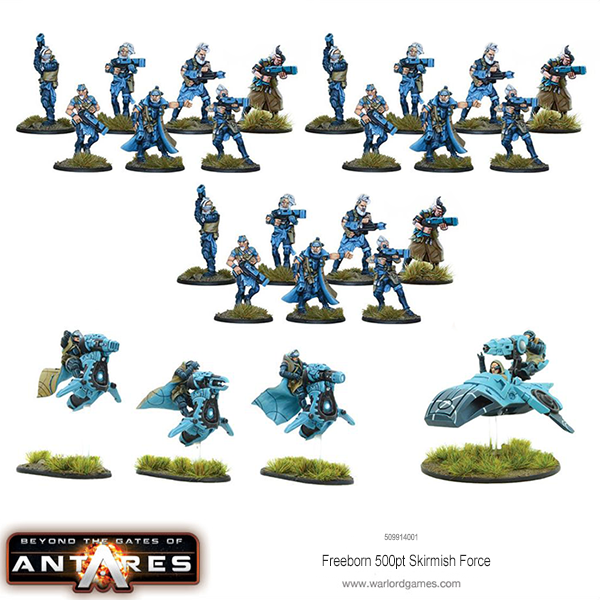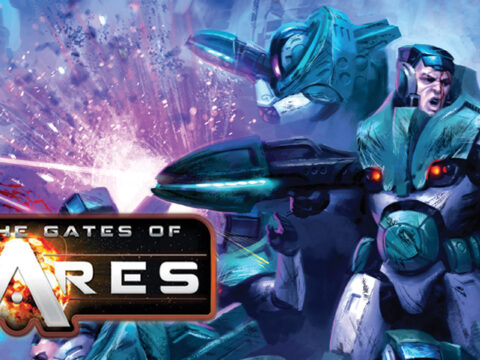For the fourth installment looking at Warlorder Rich.D’s Freeborn Feral force, Rich talks us through the initial ideas and first steps in creating terrain to bring their homeworld of Pellemar to life on the tabletop…
In case you missed the previous articles on building the army, and setting the scene,,take a look here, here, and here!
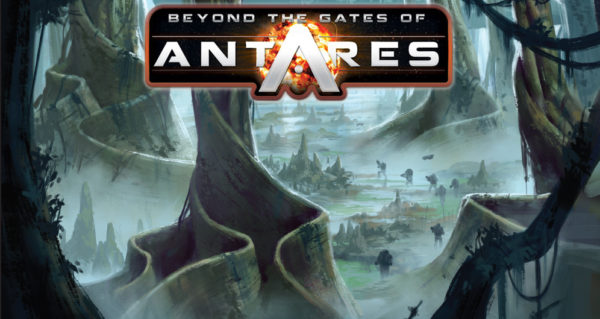
Initial thoughts, and the planning process
In the previous article, I hinted a little at the type of planet which my Freeborn Ferals inhabit… however, as a quick recap and refresher….
Previously the site of fighting between the Algoryn and Concord forces, it has also seen huge amounts of destruction from meteor impacts as well… it has laid in relative peace for the past few generations, which has allowed to native wildlife to recover – and even thrive… with many species now having ballooned to unfathomable proportions, now unrecognisable from their original state…
So – how to represent this on the table? Well – my description mentions that…
“Layer-upon-layer of dense canopies shroud much of the planet’s surface from sunlight – so there is little in the way of ground-hugging plant-life. The majority of foliage sits up high. Several of the lower canopies have also begun to further mutate, adapt and evolve to suit their environment – having mutated their photogenic cells to photosynthesise light from elsewhere on the UV spectrum – lessening their dependency upon sunlight.”
I have since re-thought and revised this a little… for one key reason – in Antares, cover plays a huge part in the game, and – nobody has ever looked at a sparse, flat, featureless gaming table and thought ‘Wow – that really inspires me to play!’ – so I’d need some sort of scatter terrain present on the tabletop if it was to look half-decent…
Antares gives us a fresh universe – near-endless possibilities of what a planet can look like – there are no guidelines, nothing is out-of-bounds or off-the-table… anything goes… *perfect!*
However – my brain has a weird (and occasionally wonderful) tendency to go-off on tangents, and regularly scampers-off down rabbit holes before I’m able to catch-up with it – and it was a previous article here on the Warlord site which served as a reminder to bring everything back to gameplay… there are pages-upon-pages of wonderful terrain ideas in the core Rulebook – with more-than 50 different terrain types… so – which types of terrain would best serve Pellemar?
Obstacle: Hedge/Vegetation
A hedge of whatever local vegetation is favoured for
the purpose, probably ornamental in nature or perhaps
serving as a field barrier for crops or stockade for
livestock. Vegetation provides only limited cover but is
better than nothing!
COVER: Res +1
Area Terrain: Scrub
Scrub is more closely packed than low scrub comprising thorny, tangled or luxuriant vegetation, perhaps with the odd large tree or the equivalent.
LOS: Light Terrain
COVER: Res+1
DIFFICULT:YES
Area Terrain: Jungle
Jungle is the ultimate in dense vegetation where progress is likely to be impeded by plant growth to an even greater extent.
LOS: Dense Terrain
COVER: Res+2
DIFFICULT: YES3/ Impassable to large models
When it comes to representing plant-life on the tabletop, we’ve seen some great terrain amongst the Antares community… however, there’s a common theme… people are using Aquarium plants – which look great! – however, I wanted to show another possibility – another option. Leaves were out of the question – I’d have to represent lush, thriving vegetation some other way…
…and then it hit me!
While visiting a local hobby supplies store to pick-up some standard supplies (and of course to wander around in search of anything that triggers a little inspiration) and of course, it’s the run-up to Halloween… so there were some small, Styrofoam Pumpkins for sale…
…and there it was… the idea… the concept… all there, wrapped-up inside of a small styrofoam pumpkin (as these things often tend to be) – my board would be dominated by huge, swollen fleshy fruits of one type or another… no particular species – a variety of shapes of bulbous masses would be scattered around – all inter-connected by a tangle of vines.
So work began in earnest – gathering anything-and-everything which could be used to represent these fruits. Given that they’re ‘SPAAAAAACE fruit,’ there was some room for imagination and improvisation – so, every grocery shopping trip became a frantic hunt for oddly-shaped packaging, and eager hunting through toy shops for any plastic form which struck inspiration…
The initial styrofoam pumpkins were soon joined on my hobby desk by novelty Raspberry and Strawberry-shaped yoghurt pots, a basket full of fake fruit of all varieties, some rubber tentacles, and various plastic egg-shaped and barrel-shaped containers of various sizes… all of which were soon hacked apart to ensure that they stood at various angles (to give a more natural-look.) Of course, with it being the run-up to Halloween, novelty pumpkins of all sizes were abound, and I soon found myself surrounded by them at all times…
Because of their original purpose (as toys and food containers) many of the pieces were thinly-plastic-walled objects… so I filled many with a simple plaster mix to add strength and weight to them – making them more sturdy.
I then based them upon various sizes and shapes of wooden bases – from standard 25/40/60mm bases, to larger bases from Sarissa’s range of Squad Bases and Area Terrain Baseplates – grouping some together, and basing others individually to give as wider variety of obstacles as possible, to keep things interesting!
I then set-about adding the vines… Vines proved to be a fantastic idea for four reasons;
- Because there’s such a variety of fruit-types, I needed some form of aesthetic element to tie everything together… vines would do just that! – they fit the theme of the terrain nicely
- They’d also be handy in being able to hide any imperfections – dents, cracks, and unsightly joins (which are somewhat inevitable in any of my hobbying!)
- Adding vines to the existing fruits would (hopefully) disguise them a little, so that it wasn’t quite so obvious that I was using giant Strawberries, Pumpkins etc… they could be less recognisable, and more believably ‘generic space fruit’
- Vines are super-simple to do! Just mix some Pro-Create together into a smooth grey, then roll it into thin sausages, and drape them over the fruits, bases, and whatever else you want to cover! Even for a buffoon like me, it took just a few minutes of playing to get them looking half-decent.
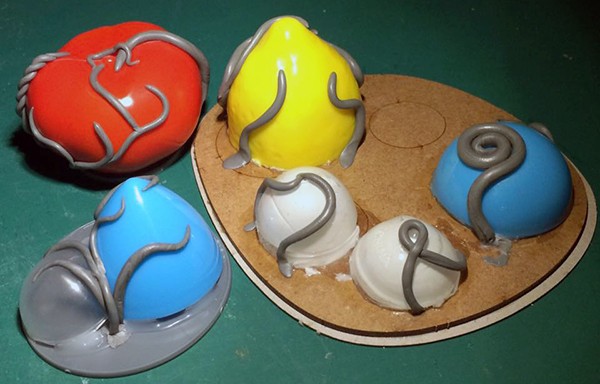
I was really impressed with the vines – the more I did, the quicker the project seemed to come together… they were such a simple element, but one which drew everything together – and they really helped me to visualise the planet.
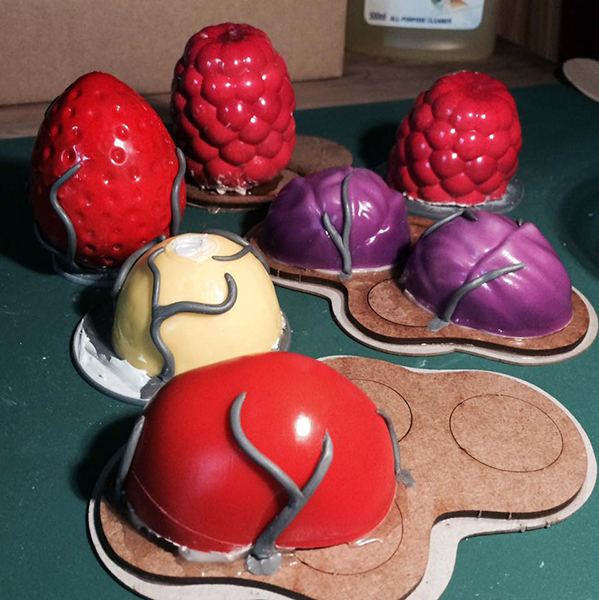
Next-up – I’ll be adding Base Render to all of the bases, to level everything out, and to hide the Grey Stuff ‘anchor-points’ on the bases, before adding basing sand… then paint!
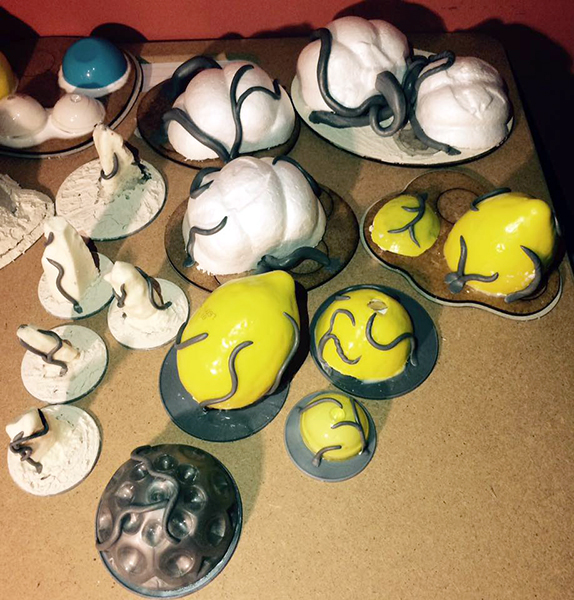
When it comes to paint schemes – there are two things I kept in mind… first, I wanted to further try to hide the fact that these were Strawberries, Pumpkins etc and disguise them as space fruit… so I’d use non-native colours.
Second – I wanted to tie everything in with the army – the Ferals would try to camouflage themselves as best they could – so the fact that the army was painted predominantly in blues and purples (with a little brown) would also serve as a guide.
Here’s a quick snap-shot of about 50% of the scatter terrain pieces as they currently stand… you’ll see that – as well as the fruits, I’ve also snook-in a set of Standing Stones (as they play a huge role in the force’s fluff) and I also raided my miniatures collection for some old kits which I’ve torn-apart to create some larger plant-like objects….
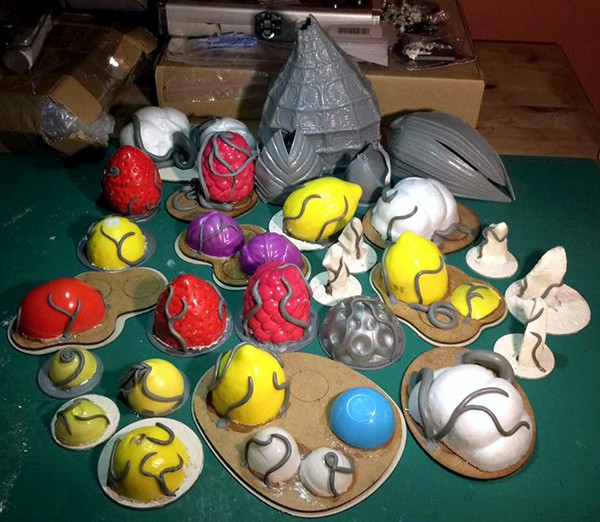
Article written by Richard Dando
Do you have an article within you? Are you itching to show your collection to the world of Antares? Then drop us a line with a couple of pictures on the Beyond the gates of Antares facebook page or share with all over at the Warlord Forum
Start your army with a Freeborn 500 point Scout Force
